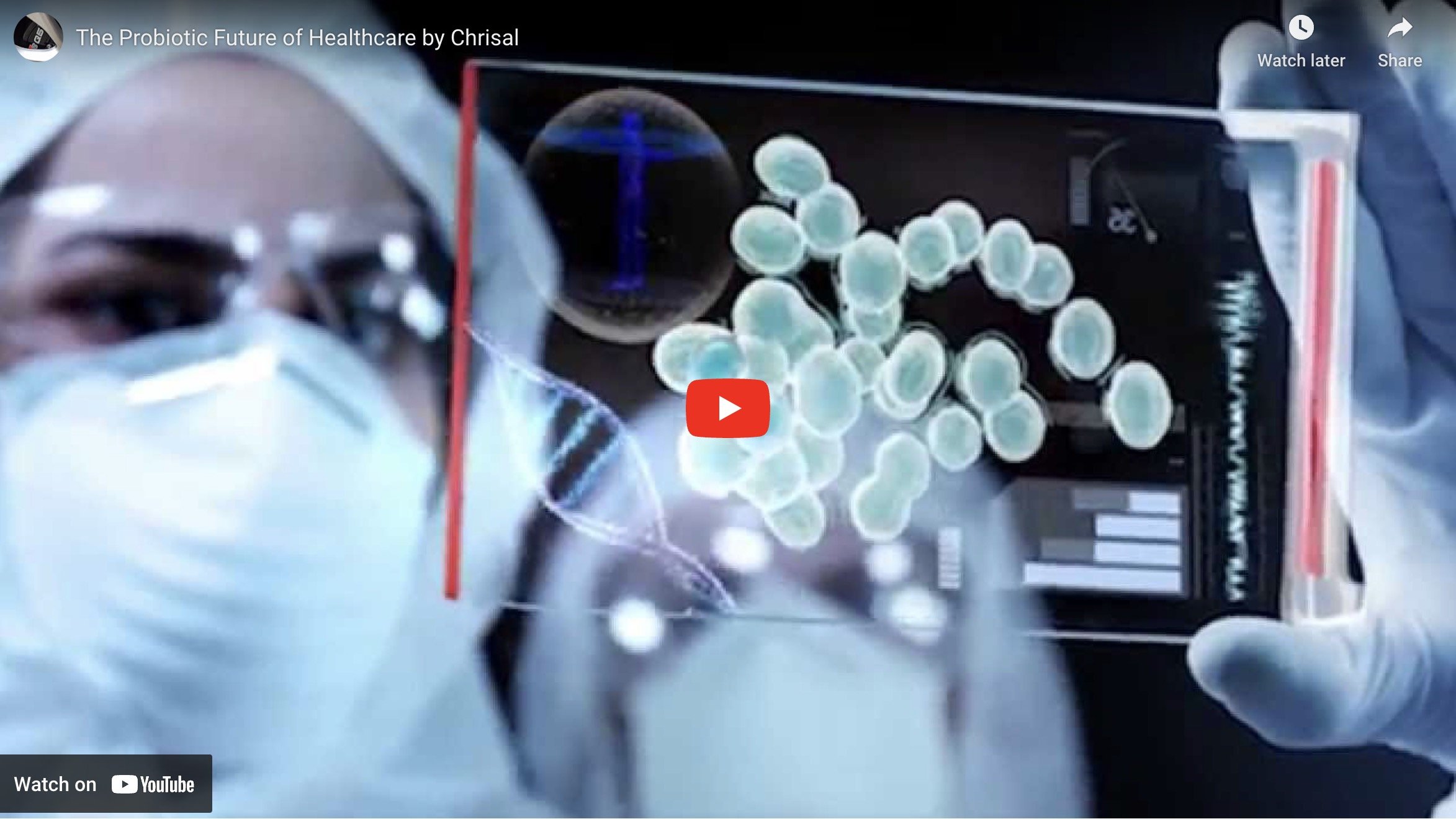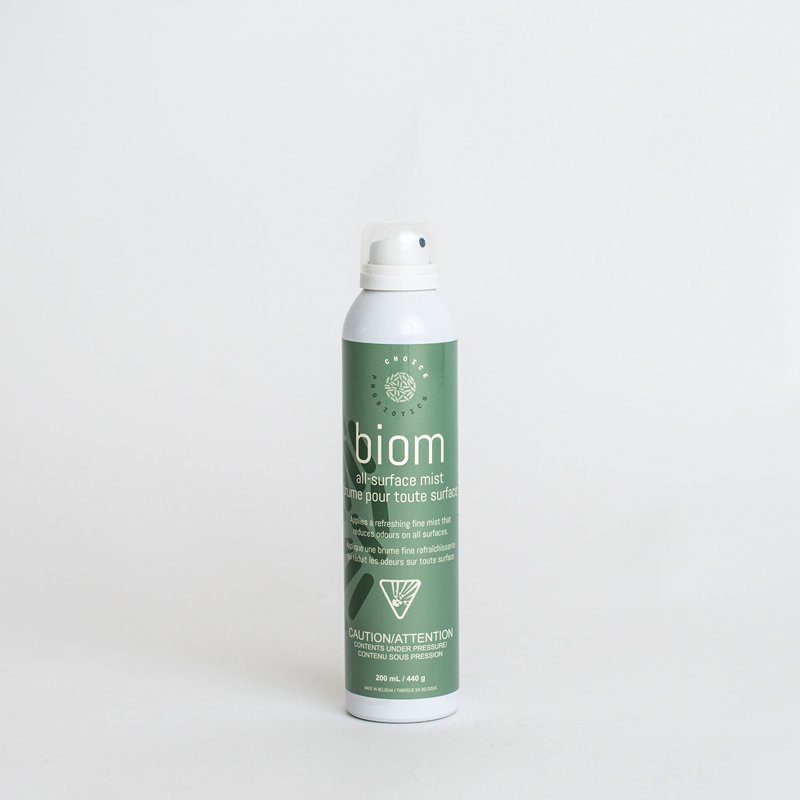 Image 1 of 1
Image 1 of 1


BIOM Laundry Detergent
BIOM concentrated liquid laundry detergent utilizes probiotics for effective fabric cleaning and deodorizing. Suitable for both cold and warm water washes, each bottle yields over 50 loads.
Biom Laundry detergent leaves clothes with a fresh scent and is safe for all fabrics. Compatible with high-efficiency laundry machines.
Safe for septic systems - good bacteria actually fortify septic systems!
WHY BIOM?
Made in Belgium by Chrisal Laboratories, Biom Home probiotic cleaning products are the result of decades of testing. This innovative biotechnology is used in over 50 countries worldwide, providing proven and effective solutions for improving the environment for humans and animals.
Good Bacteria = Cleaner Healthier Environment
Safe for inhalation and touch
Safe for septic systems - good bacteria actually fortify septic systems
Biom products are EU Ecolabel certified for sustainable production
ISO certified for quality control in production
OECD certified for safety
Chrisal (Biom) products contain an absolute minimum of 50 million probiotics per ml. Certain products go up to half a billion per ml! The prebiotics and prebiotics also have to survive the entire life of the product. Chrisal probiotics are by far the market leader in stability and gives all its products a shelf life of at least 3 years!
HOW PROBIOTIC CLEANERS WORK
Competitive Exclusion
The non-toxic detergents help you remove surface dirt and debris. Then the probiotics go to work, cleaning down to the microscopic level. The probiotic cleaning products quickly populate the space harmful and odour causing microbes for food. Without spaces to grow into, and a reduced food supply, the harmful and odour causing microbes cannot repopulate.
Quorum Sensing
When the probiotics sense that their food and space resources are being depleted, they send out quorum sensing signals to each other, which slows the growth of all microbes on a surface. This makes it even more difficult for harmful germs to survive. Routine cleaning with the probiotic cleaners ensures they remain the dominate micro-organism.
Biofilm Removal
Biofilm provides a hiding place for many types of harmful microbes by forming a protective shield from chemical and mechanical removal. The probiotic cleaning products use biofilms as a food source, thus easily removing it! For 3-5 days after cleaning, the probiotics continue to ‘nibble away’ at biofilms, rapidly reducing odours and significantly decreasing risk of infection.
INGREDIENTS
Aqua, Triethanolamine, Polyacrylates, Sodium Diethylenetriamine pentamethylene phosphonate, Sodium laureth sulfate, Dodecylbenzene sulfonic acid, Cocamide DEA, Bacillus ferment, Dimethicone, Phenoxyethanol, Parfum, Propylene Glycol, Subtilisin, Cellulase, CI 16255
WHAT ARE BIOFILMS?
Biofilms are microscopic layers that entrap dirt, viruses, harmful bacteria, moulds, and odour causing microbes. The microscopic layers of biofilm form on virtually any wet or dry surface, and are extremely difficult to remove. They embed in fabrics, plastics, foam, matting, cushions, and clothing. They adhere to hard surfaces such as shower/tile grout, and flooring, often making it very slippery. Research shows biofilms are often present on dry, disinfected surfaces, such as electronic devices and countertops and emit the harmful microbes and odours into a facility.
The problem with biofilm
Disinfectants and harsh chemical cleaners do not remove biofilm completely, at best they only burn off the top layers. When disinfectant cleaning supplies are used on biofilms, the biocidal chemicals cause the biofilm matrix to become chemically resistant. This makes the pathogens within the biofilm even more chemically resistant, increasing antimicrobial resistance which is known to directly foster an increase in antibiotic resistance. This creates Superbugs. Reducing antibiotic resistance includes taking steps to reduce the use of antimicrobial products such as disinfectants and sanitizers.
Biofilm removal with probiotic cleaning
Using toxic or corrosive cleaners to remove biofilm is ineffective, and damages surfaces, equipment, harms people and the environment while increasing bacterial resistance. A safer, more effective and sustainable method is to use PIP probiotic cleaners. PIP’s probiotic bacteria use biofilm as a food source. Once the probiotics are placed onto a surface, they release enzymes. These enzymes quickly break down biofilm into bite-size chunks, enabling the probiotics to quickly consume it. This process continues for 3-4 days after the probiotic products are applied. This action results in continuous biofilm removal leaving a surface which is not harbouring a reservoir of harmful microbes.
End
BIOM concentrated liquid laundry detergent utilizes probiotics for effective fabric cleaning and deodorizing. Suitable for both cold and warm water washes, each bottle yields over 50 loads.
Biom Laundry detergent leaves clothes with a fresh scent and is safe for all fabrics. Compatible with high-efficiency laundry machines.
Safe for septic systems - good bacteria actually fortify septic systems!
WHY BIOM?
Made in Belgium by Chrisal Laboratories, Biom Home probiotic cleaning products are the result of decades of testing. This innovative biotechnology is used in over 50 countries worldwide, providing proven and effective solutions for improving the environment for humans and animals.
Good Bacteria = Cleaner Healthier Environment
Safe for inhalation and touch
Safe for septic systems - good bacteria actually fortify septic systems
Biom products are EU Ecolabel certified for sustainable production
ISO certified for quality control in production
OECD certified for safety
Chrisal (Biom) products contain an absolute minimum of 50 million probiotics per ml. Certain products go up to half a billion per ml! The prebiotics and prebiotics also have to survive the entire life of the product. Chrisal probiotics are by far the market leader in stability and gives all its products a shelf life of at least 3 years!
HOW PROBIOTIC CLEANERS WORK
Competitive Exclusion
The non-toxic detergents help you remove surface dirt and debris. Then the probiotics go to work, cleaning down to the microscopic level. The probiotic cleaning products quickly populate the space harmful and odour causing microbes for food. Without spaces to grow into, and a reduced food supply, the harmful and odour causing microbes cannot repopulate.
Quorum Sensing
When the probiotics sense that their food and space resources are being depleted, they send out quorum sensing signals to each other, which slows the growth of all microbes on a surface. This makes it even more difficult for harmful germs to survive. Routine cleaning with the probiotic cleaners ensures they remain the dominate micro-organism.
Biofilm Removal
Biofilm provides a hiding place for many types of harmful microbes by forming a protective shield from chemical and mechanical removal. The probiotic cleaning products use biofilms as a food source, thus easily removing it! For 3-5 days after cleaning, the probiotics continue to ‘nibble away’ at biofilms, rapidly reducing odours and significantly decreasing risk of infection.
INGREDIENTS
Aqua, Triethanolamine, Polyacrylates, Sodium Diethylenetriamine pentamethylene phosphonate, Sodium laureth sulfate, Dodecylbenzene sulfonic acid, Cocamide DEA, Bacillus ferment, Dimethicone, Phenoxyethanol, Parfum, Propylene Glycol, Subtilisin, Cellulase, CI 16255
WHAT ARE BIOFILMS?
Biofilms are microscopic layers that entrap dirt, viruses, harmful bacteria, moulds, and odour causing microbes. The microscopic layers of biofilm form on virtually any wet or dry surface, and are extremely difficult to remove. They embed in fabrics, plastics, foam, matting, cushions, and clothing. They adhere to hard surfaces such as shower/tile grout, and flooring, often making it very slippery. Research shows biofilms are often present on dry, disinfected surfaces, such as electronic devices and countertops and emit the harmful microbes and odours into a facility.
The problem with biofilm
Disinfectants and harsh chemical cleaners do not remove biofilm completely, at best they only burn off the top layers. When disinfectant cleaning supplies are used on biofilms, the biocidal chemicals cause the biofilm matrix to become chemically resistant. This makes the pathogens within the biofilm even more chemically resistant, increasing antimicrobial resistance which is known to directly foster an increase in antibiotic resistance. This creates Superbugs. Reducing antibiotic resistance includes taking steps to reduce the use of antimicrobial products such as disinfectants and sanitizers.
Biofilm removal with probiotic cleaning
Using toxic or corrosive cleaners to remove biofilm is ineffective, and damages surfaces, equipment, harms people and the environment while increasing bacterial resistance. A safer, more effective and sustainable method is to use PIP probiotic cleaners. PIP’s probiotic bacteria use biofilm as a food source. Once the probiotics are placed onto a surface, they release enzymes. These enzymes quickly break down biofilm into bite-size chunks, enabling the probiotics to quickly consume it. This process continues for 3-4 days after the probiotic products are applied. This action results in continuous biofilm removal leaving a surface which is not harbouring a reservoir of harmful microbes.
End



Microscopic view of a biofilm








